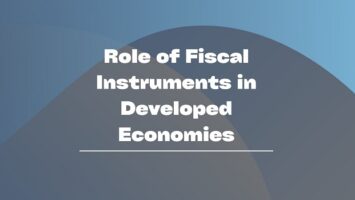Role of Compensatory Finance:
The problem of compensatory finance was posed first by the depression of the thirties and was recast subsequently by the inflationary pressure of the war and the years that followed. There is little reason to expect that future decades will provide a more stable setting unless appropriate policies are undertaken. Even if the shadows of war should pass, the problem of instability will remain. A free economy, if uncontrolled tends toward more or less drastic fluctuations, in prices and unemployment; and apart from relatively short-term swings, maladjustment of a secular sort may arise towards unemployment or inflation. Public policy must assume a stabilizing function in order to hold within tolerable limits departures from high employment and price stability.
It is thus of paramount importance for the success of a free economic system to develop compensatory measures which can maintain high employment when private activity threatens to slacken and which can maintain price level and stability when demand threatens to exceed available supplies. On the basis of the above discussion, it can be concluded that the following are the underlying principles for maintaining price stability and employment.
Underlying Principles:
The basic logic of compensatory finance is simple enough and may be summarized in a few rules.
(1) If involuntary unemployment prevails, increase the level of demand so as to adjust aggregate expenditures upward to the value of output produced at full employment.
(2) If inflation prevails reduce the level of demand so as to adjust aggregate expenditure downward to the value of output produced at current prices rather than rising prices.
(3) If full employment and price stability prevail, maintain the aggregate level of money expenditure to prevent unemployment and inflation.
The first rule is based on the proposition that fiscal policy may be used to increase the aggregate level of expenditure, and that this will raise the level of employment. The level of aggregate demand may be raised in a number of ways. The government may undertake to increase its own expenditures on goods and services it may take steps leading to an increase in the level of private expenditure, or it may combine both measures, under conditions of depression, an increase in expenditures, ordinarily leads to an increase in real output and employment.
The second rule of compensation finance relates to the situation where total expenditure exceeds feasible output at current prices. Fiscal adjustments must be made that may prevent a potential increase in the level of expenditures from coming about. The required adjustments are inverse of those used in the depression case. Government expenditures on goods and services may be reduced, tax rates may be increased, and transfer payments may be cut.
Turning now to the third rule of compensatory finance, we know that maintenance of a high level of employment with price level stability does not imply a constant level of aggregate demand. A stabilization policy in a growing economy doesn’t mean that the level of income is to be stabilized at a constant level, on the contrary, the policy must provide for an expansion of demand commensurate with the growing income and capacity to produce. It must be designed to result in a rate of growth that moves along with an equilibrium path so that a high level of employment and price stability is maintained in the process of expansion.









Comments (No)